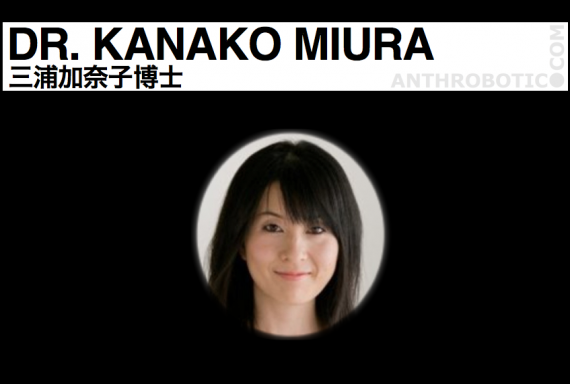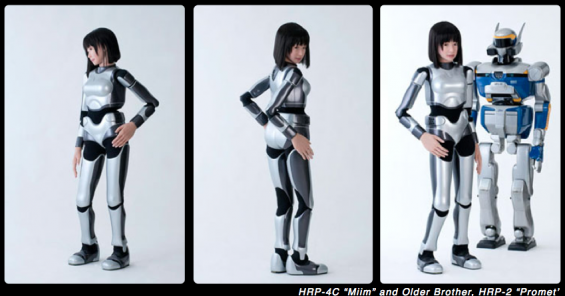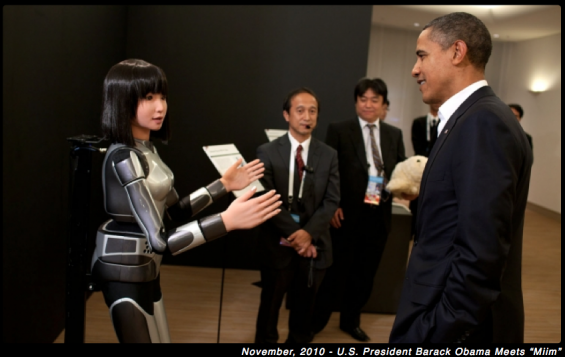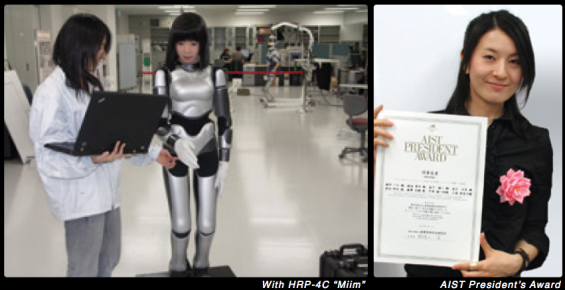 (Mirroring via Akihabara News)
(Mirroring via Akihabara News)
While riding her bike on Sunday, May 19th, at approximately 3:30pm, highly accomplished and well-regarded robotics researcher Dr. Kanako Miura was struck by a large truck near Charlesgate Park in the Fenway-Kenmore neighborhood of Boston, Massachusetts. Dr. Miura, 36, died at the scene. Official reports conclude that it was simply a terrible accident on a busy road.
• • •
A guest of the Massachusetts Institute of Technology (MIT), Dr. Miura arrived last October for what was planned to be year of research at the world-class MIT Computer Science and Artificial Intelligence Laboratory (CSAIL). She had been invited to share her pioneering work on improving the understanding of human bipedal locomotion and applying that practical knowledge to advanced humanoids, i.e., Dr. Miura made robots that walk like us.
“She was really part of the fabric of our group. She was not just a visitor in our group, she became a close friend and a member of our family. The energy she brought to her work was contagious, and her enthusiasm was easy to see. She loved giving tours, and showing off the lab, and she had an unfailing optimism in the future and importance of humanoid robots.”
–Professor Russ Tedrake, Director; Center for Robotics, CSAIL
Dr. Miura held a B.E. in Aerospace Engineering and an M.E. and Ph.D. in Information Science from prestigious Tohoku University. She also earned an additional Ph.D. in Electronics and Automation from equally renowned Université Louis-Pasteur in 2004. Such certifications alone evidence a formidable intellect; factoring in the linguistic challenges between Japanese, French, and English – well, that pushes the dial up a bit further.
The considerable expertise Dr. Miura brought to MIT arose from post-doctoral research at Tohoku University, a subsequent research position with communications giant NTT Docomo, and her eventual ascent to senior researcher at Japan’s National Institute of Advanced Industrial Science and Technology (AIST) in the Intelligent Systems Research Institute’s Humanoid Robotics Department.
While at AIST, Dr. Miura worked on the world-famous HRP-4C Future Dream robot (nicknamed “Miim,” from the Japanese). You might not know the name, but chances are you’ve seen photos or video of the agile and strikingly human robot:

HRP-4C has also “met” with the highest levels of foreign government:

With the above robot as the platform and Dr. Miura as the lead researcher, the AIST team made several valuable and distinct contributions to mobility and agility in humanoid robotics. The video below, for example, demonstrates the “slip turn” motion. “Slip turn” is very human-like movement that allows a biped to rapidly change direction with minimal change in body orientation. How is this an advancement? Well, think about the baby steps a robot like ASIMO has to take when changing direction, as opposed to this:
Another project led by Dr. Miura was the development of a more human-like gait for bipedal robots. When we walk, movement in the pelvis precipitates and works in conjunction with movement in the knees. A natural human step ends with the back foot balancing and pushing off the toe, and this leads to the standard leg-swing motion of the human stride. Here’s that recreated in robot form – and again, sorry ASIMO, but your flat-footed shuffling must yield:
Dr. Miura also led a project that would allow a robot to mimic human movement based on motion capture technology.
After contributing so much to her field, in addition to eventually being courted for a year of study and collaboration at MIT, she was also recognized here at home with the 2010 AIST President Award:

Such is the noble reality of robotics research. No single person can crank out a perfect human facsimile, and there are no Tony Starks – there are researchers like Dr. Miura, diligently working through small but profound iterations and laying the foundation for generations of robotics research to follow.
Unfortunately, no one at Akihabara News or Anthrobotic.com knew or had ever met Dr. Miura. However, through the words of Professor Tedrake and other public and private discussions, it is easy to appreciate that she was not only a brilliant and motivated scholar, but also a warm and engaging person. How we wish to have had the pleasure of interacting with such a comprehensive intellect.
Though something small, we hope it a fitting memorial to share her work here. That awareness of her contributions might inspire others toward learning about robotics, engineering, or science of any kind is a fitting legacy.
Seems safe to assume she’d agree.
• • •
Sources: Boston Police Twitter; Boston Police Department; Universal Hub; Boston.com; MIT News; CSAIL Computer Science and AI Laboratory News; IsolateCyclist Blog; Fenway-Kenmore Patch; Worldjournal.com (Chinese); IT Media (Japanese/日本語)
Photos: LinkedIn; AIST; The White House





